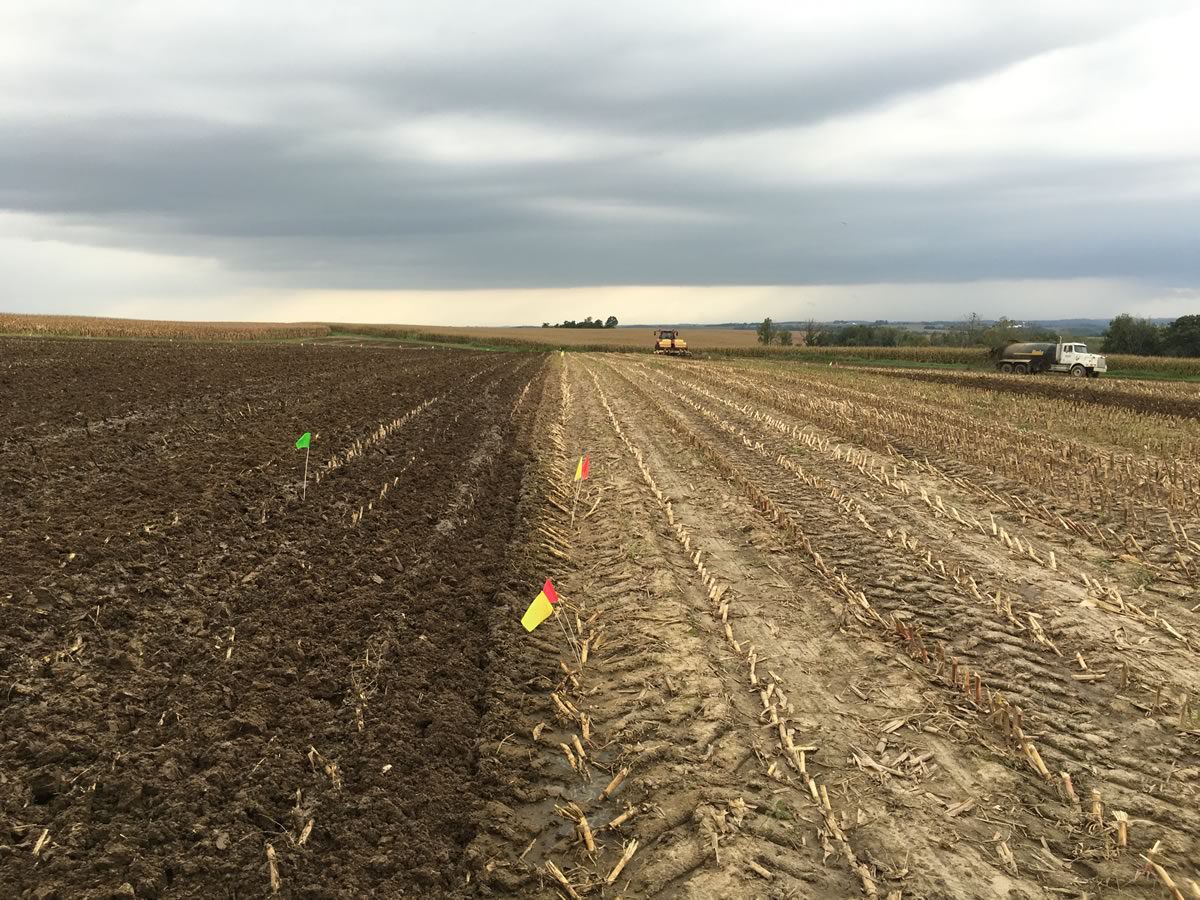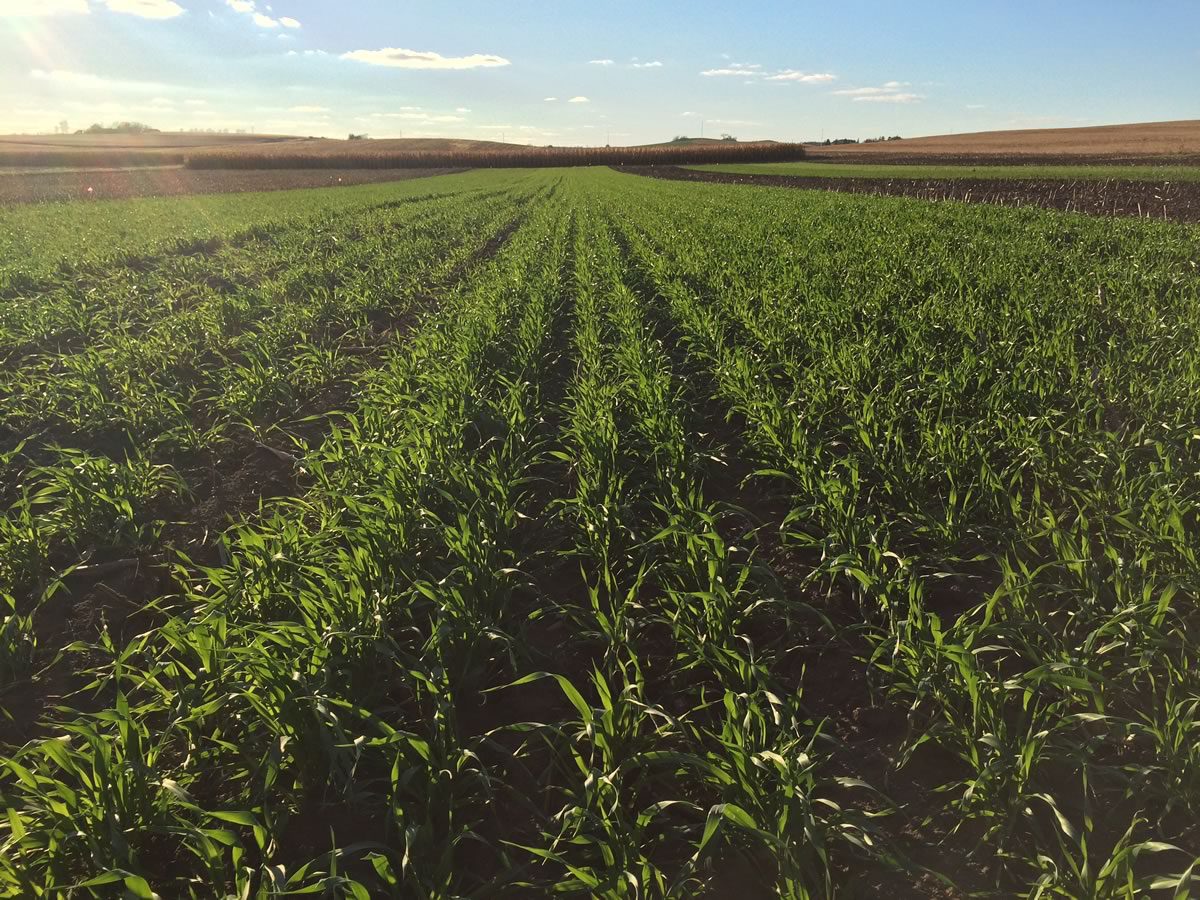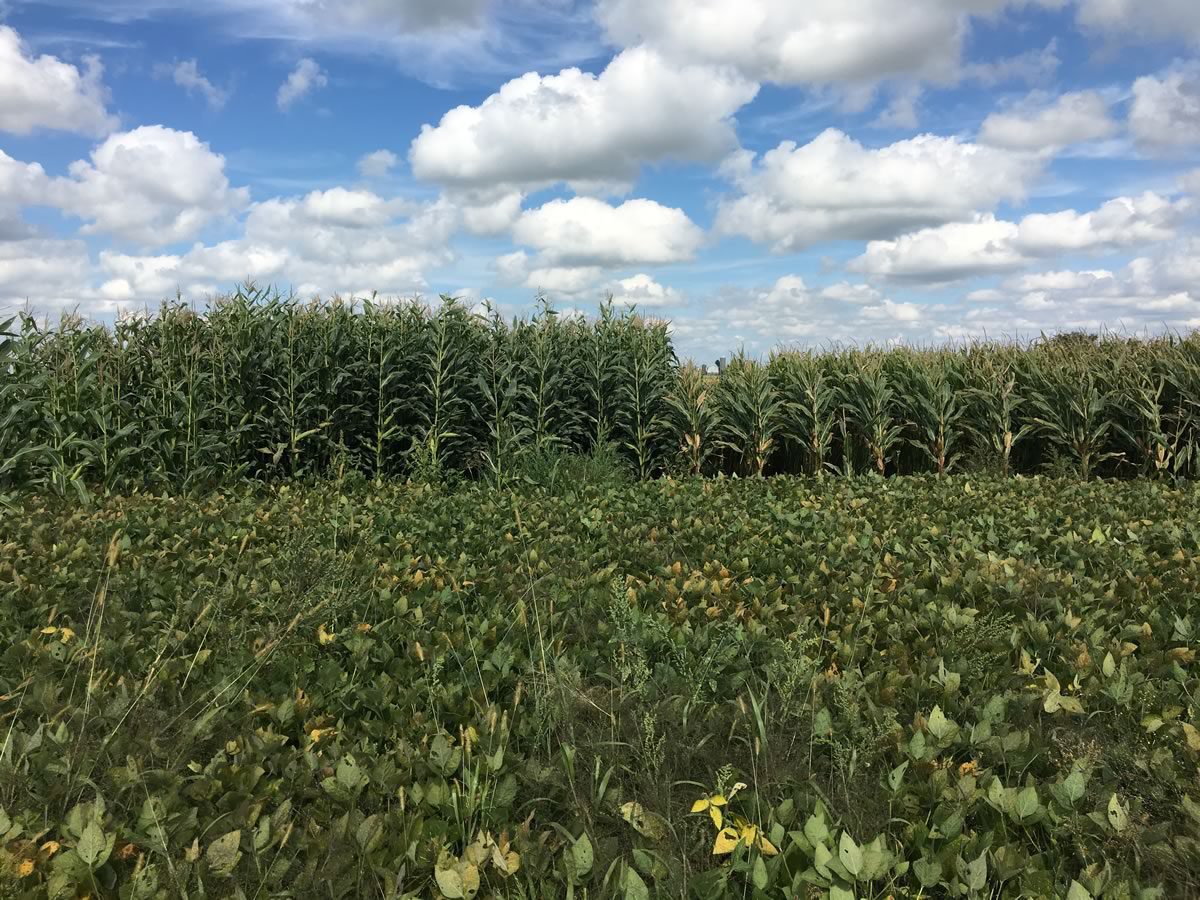
Crops and Soils
Many different crops are grown on dairy farms in order to provide feed for the cows that is affordable while providing a healthy diet for cow milk production.
The most common crops grown on dairy farms in the Great Lakes region are corn for grain, corn for whole plant silage, small grains, small grain silage, soybeans, and alfalfa or alfalfa grass mixtures. Each crop requires different resources such as water and nutrients, as well as different energy requirements to perform tillage and other field operations during the growing season.
It is important to be as efficient as possible with these resources to provide another way to improve production and minimize environmental impacts including greenhouse gas (GHG) emissions to the air and contaminated runoff to surface water.
Crop Rotation
Crop rotation refers to growing different crops in sequence over time or consecutive seasons in the same field. A diverse crop rotation that includes legumes (ex. alfalfa) and crops that provide year-round vegetative cover such as perennials (ex. alfalfa) or winter annuals (ex. winter wheat) can promote healthy soils, increase soil fertility, and reduce erosion, crop pest pressures, plant diseases, and weeds. A common crop rotation sequence in the Great Lakes region is a corn-soybean-winter wheat rotation with periods of alfalfa grown for several years (2 to 4) at some point in the rotation.
Having perennial forages (such as alfalfa) in a crop rotation is beneficial for the soil because vegetative cover is present year-round and no tillage occurs during this time. Corn for silage (where the entire plant is harvested, compared to just the grain) may be included in the rotation at multiple times based on farm forage needs. In general, corn grown the year after a previous corn crop tends to have lower yield compared to corn grown in rotation with other crops. Including a winter annual (ex. rye) in the rotation after corn silage harvest, either as a cover crop or as an additional forage crop harvested in the spring is becoming more common. This provides protection to the soil over the winter, provides an additional opportunity to apply manure, and if harvested can provide high quality feed for the dairy.
Nutrient Management
Like any living organism, plants require nutrients to grow. While the soil is a source of most crop nutrients, additional nutrients (inorganic fertilizers or manure) are applied to achieve higher yields.
Soil tests are critical guides for assessing the soil nutrient supply and developing recommendations for additional nutrient requirements for economically optimum yields.
Crops require some nutrients in larger quantities (called macronutrients) and others in smaller quantities (called micronutrients).
Primary macronutrients often need to be replenished in the soil regularly in the form of commercial fertilizers or manure and include nitrogen (N), phosphorus (P), and potassium (K). Legumes (ex. alfalfa or soybeans) grown in the crop rotation also fix large amounts of N from the air. This provides all of the N requirement of the legume and results in a large amount of N left in the soil for the following non-legume crop (ex. corn) in the rotation.
While secondary nutrients like calcium, magnesium, and sulfur and micronutrients are required in smaller amounts, having an adequate balance of all essential nutrients is critical to good crop production.
Manure & Fertilizers
Crops produced by dairy farms obtain many of the required soil nutrients from manure. Land application of manure can occur at various times in the year depending on the crop rotation, but early summer, fall following corn harvest, and spring are the most common in the Great Lakes region. There are different methods and technologies to land apply manure (e.g. broadcast and injection), which gives dairy farmers some flexibility. However, different timing and methods of applications affect the availability of the manure nutrients to the crop. This must be accounted for in developing a manure application plan for the farm to assure that the crops receive adequate nutrients.

When manure is not sufficient to provide all required nutrients, commercial fertilizer applications are applied. Regardless of the nutrient source, nutrient management plans are used to balance nutrients supplied by the soil and all nutrients applied to the soil and the nutrients needed by the crops. Although an ideal nutrient management plan provides the exact nutrients needed by the crop, this can be difficult to achieve in practice. Over-application of nutrients can lead to losses to the environment (air and water) while under-application can reduce crop yields. Although this can be difficult, there are many tools available to help farmers manage farm nutrients.
Soil Management

Soil management is important to maintain productive soils. There are many different practices including adding organic material, rotating crops, managing pests and nutrients, tillage selection, including no tillage and regular monitoring that can keep soils healthy. Crop rotations are especially important when all the biomass (the entire plant not just the grain) is removed, as is the case with corn harvested for silage. You can learn more about soil management from University of Minnesota Extension.
Tillage
Tillage is a common agricultural practice where soil is broken up using machines. Farmers may decide to till their soil before planting a crop to incorporate amendments such as manure and fertilizers, terminate weeds and create a good seed bed.

However, tillage is not always necessary, especially if farmers are rotating crops, and may result in increased environmental impacts particularly on soils prone to erosion.
The decision to use tillage is dependent upon things such as soil type and slope, the crops being grown, availability of equipment. Farmers adopt conservation tillage or no-till for a variety of reasons including for soil conservation and soil health benefits; and the ability to plant crops with fewer field operations, less fuel, labor and equipment. Learn more about conservation tillage from Penn State Extension.
Cover Crops

Cover crops are used for soil conservation and multiple benefits including:
- to retain nutrients in the topsoil for a subsequent crop and prevent them from leaching into groundwater,
- to add organic matter to the soil, support soil organisms, and improve soil health
- to suppress weeds, and
- provide habitat for beneficial organisms
For instance, grass cover crops, such as cereal rye or oats, are often planted after corn harvest. Legume cover crops that fix nitrogen (like clovers) can be planted during spring into winter wheat (relay-cropped or under-seeded) or following winter wheat harvest, and release nitrogen to the next crop, while providing organic matter to the soil. Learn more about cover crops from University of Wisconsin Extension.
Other Conservation Practices
Reducing tillage and planting cover crops are two primary conservation management practices used on dairy farms. Additional conservation practices include:

- planting crops along the contour;
- providing continuous plant cover with perennial forage crops or by planting a winter annual crop such a cereal rye or winter wheat after corn silage and harvesting it for forage in spring (double-cropping);
- planting grass waterways, buffer strips and riparian buffers to reduce runoff to surface waters.
There are many conservation practices that can be incorporated at the field level to reduce the impact to air and water quality while conserving nutrients for the crops being produced.